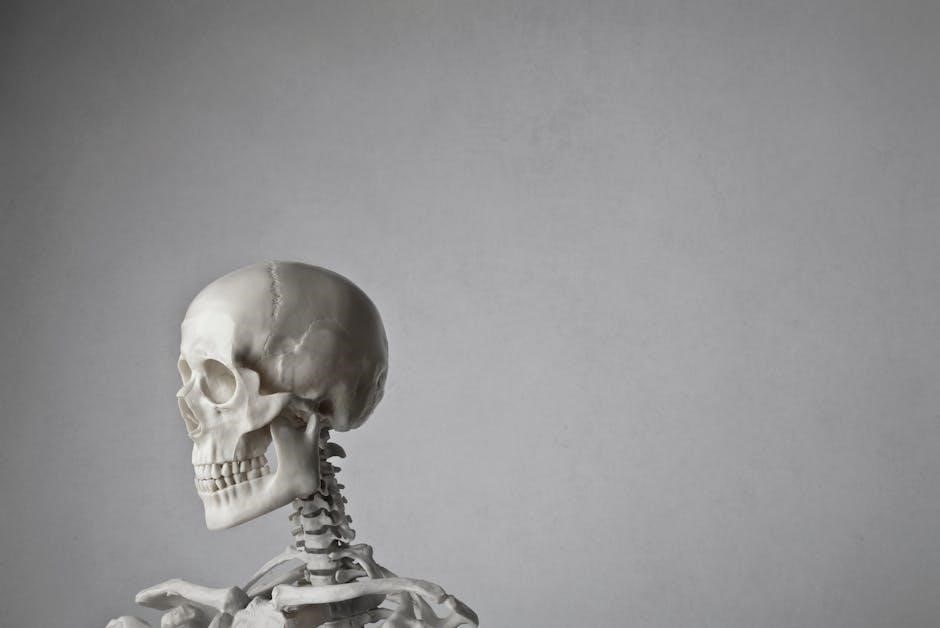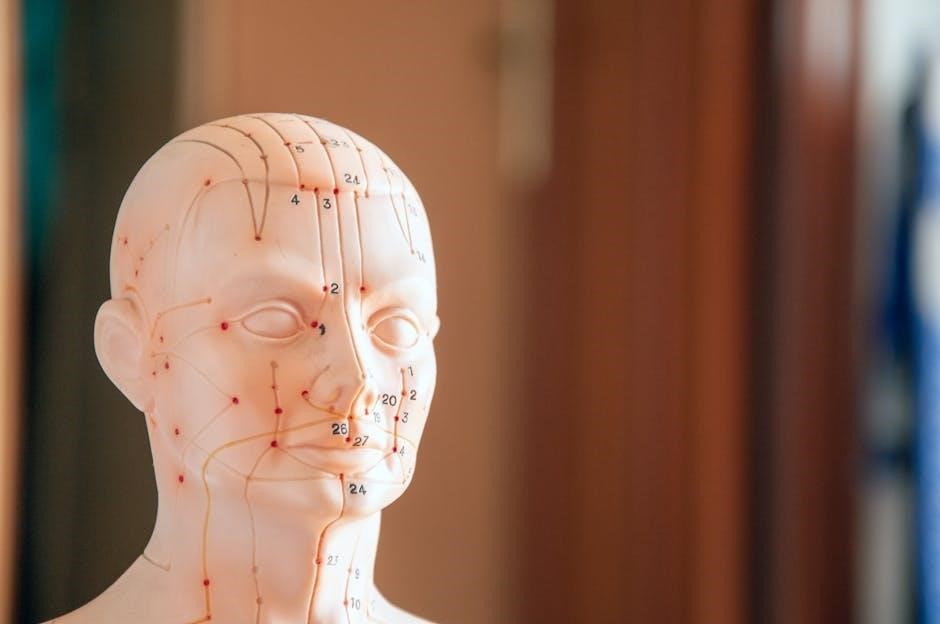
pdf 206 bones of the body diagram
The human skeletal system consists of 206 bones, providing structure and support, with and
files available online for study and reference purposes daily․
Overview of the 206 Bones
The 206 bones in the human body are organized into a complex system, with each bone playing a unique role in providing structure and support․ The bones are categorized into two main groups: the axial skeleton and the appendicular skeleton․ A
file containing a diagram of the 206 bones can be a useful tool for studying and understanding the skeletal system․ These diagrams can be found online and can be downloaded for free․ The provide a detailed overview of the skeletal system, including the location and function of each bone․ By studying these diagrams, individuals can gain a better understanding of the complex relationships between the different bones in the body․ The 206 bones work together to provide a framework for the body, allowing for movement, support, and protection of internal organs․ The study of the skeletal system is essential for understanding human anatomy and physiology․

The Axial Skeleton
The axial skeleton includes the skull, vertebral column, and ribcage, forming the body’s central axis, with
diagrams
available in pdf format for study․
Components of the Axial Skeleton
The axial skeleton is composed of 80 bones, including the skull, vertebral column, and ribcage, which form the body’s central axis․ The skull is made up of 22 bones, while the vertebral column consists of 33 bones․ The ribcage is composed of 24 ribs, with each rib attached to the vertebral column․ The axial skeleton provides protection for the brain, spinal cord, and vital organs, such as the heart and lungs․ It also serves as a point of attachment for muscles, allowing for movement and support․ The components of the axial skeleton work together to maintain the body’s posture and facilitate movement․ Diagrams of the axial skeleton are available in pdf format, providing a detailed illustration of its components and their relationships․ These diagrams can be useful for studying the axial skeleton and its functions, and can be downloaded from online resources․ The axial skeleton is a vital part of the human body, and its components work together to maintain overall health and function․

The Appendicular Skeleton
The appendicular skeleton has 126 bones, with
files and diagrams available for study and reference, including upper and lower extremities and their functions․
Organization of the Appendicular Skeleton
The appendicular skeleton is organized into upper and lower extremities, with each having specific bones and functions, as shown in
files and diagrams available online for study and reference․
The upper extremities include the shoulder, arm, forearm, wrist, and hand, while the lower extremities include the hip, thigh, leg, ankle, and foot․
Each of these sections has a specific number of bones, with the upper extremities having 64 bones and the lower extremities having 64 bones as well, totaling 128 bones in the appendicular skeleton․
The organization of the appendicular skeleton allows for a wide range of movements and functions, including walking, running, and grasping objects․
The bones in the appendicular skeleton work together to provide support, stability, and mobility to the body, and their organization is crucial for maintaining overall health and function․
The study of the organization of the appendicular skeleton is important for understanding how the body works and for diagnosing and treating musculoskeletal disorders and injuries․
Overall, the organization of the appendicular skeleton is complex and fascinating, and continues to be an important area of study in anatomy and medicine․

Functions of the Skeletal System
The skeletal system provides support and protection, with
files and diagrams showing its various functions and importance in the human body daily always․
Importance of Bones in the Body
The human body contains 206 bones that provide support and protection, with pdf files and diagrams showing their importance in the human body․
The skeletal system gives us our basic shape and helps to protect our fragile internal organs․
It also gives us an essential framework for our muscles to act on, allowing us to move and function properly․
The bones store essential minerals like calcium and phosphorus, regulating mineral balance in the body․
They release hormones, such as osteocalcin, that influence glucose metabolism and energy regulation․
The skeletal system is a complex and vital part of the human body, and understanding its importance is crucial for maintaining overall health and well-being․
With the help of pdf files and diagrams, individuals can learn more about the skeletal system and its functions, gaining a deeper appreciation for the importance of bones in the body․
The skeletal system plays a vital role in our daily lives, and its importance cannot be overstated․
It is essential to take care of our bones and maintain a healthy skeletal system to ensure optimal health and function․
The importance of bones in the body is a fascinating topic, and one that continues to be studied and researched by scientists and medical professionals․
By learning more about the skeletal system, we can gain a better understanding of the importance of bones in the body and take steps to maintain optimal health․
Overall, the importance of bones in the body is a critical aspect of human health and function, and one that should not be overlooked․
The skeletal system is a remarkable and complex system that plays a vital role in our daily lives, and its importance is essential for maintaining overall health and well-being, with 206 bones working together to provide support and protection․
The importance of bones in the body is a topic that continues to be studied and researched, with new discoveries and advancements being made regularly, and pdf files and diagrams are available to help individuals learn more about this fascinating topic․
By taking care of our bones and maintaining a healthy skeletal system, we can ensure optimal health and function, and reduce the risk of injury and disease, which is essential for maintaining overall health and well-being․
In conclusion, the importance of bones in the body is a critical aspect of human health and function, and one that should not be overlooked, with the skeletal system playing a vital role in our daily lives, and its importance being essential for maintaining overall health and well-being, with pdf files and diagrams available to help individuals learn more about this fascinating topic, and by taking care of our bones, we can ensure optimal health and function․

and Summary
The human body is made up of 206 bones that work together to provide support and movement․
The skeletal system is a complex framework of bones, cartilage, and ligaments that protect internal organs and facilitate movement․
Diagrams
and pdf files are available online to help students and researchers study the skeletal system in detail․
The 206 bones in the human body are organized into two main categories: the axial skeleton and the appendicular skeleton․
Understanding the skeletal system is essential for appreciating the complexity and beauty of the human body․
The skeletal system plays a vital role in maintaining posture, facilitating movement, and protecting internal organs․
References
to pdf files and diagrams are available online for further study and research․
The human skeletal system is a remarkable and intricate system that deserves to be studied and appreciated․
The 206 bones in the human body work together to provide a framework for movement and support․